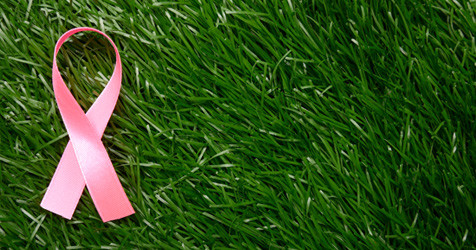WHAT IS BREAST CANCER?
Breast cancer occurs when cells in the breast divide and grow without their normal control. Tumors in the breast tend to grow slowly. By the time a lump is large enough to feel, it may have been growing for as long as 10 years.
Between 50-75 percent of breast cancers begin in the milk ducts, about 10-15 percent begin in the lobules and a few begin in other breast tissues.
HOW TO LOWER BREAST CANCER RISK?
New research indicated that women could take many proactive steps to lower their breast cancer risk. The study provides good news for women in the form of steps they can take to protect themselves, such as:
- Be as lean as possible without being underweight. A healthy body mass index is defined as being above 18.5 but no greater than 25. Women closer to the lower end of the healthy weight range have the most protection from breast cancer.
- Exercise for at least 30 minutes a day. If you can't do that, at least do some.
- Limit alcohol consumption. If you drink at all, limit your intake to one serving a day.
- New mothers should breast-feed exclusively for up to six months -- the evidence is convincing that mothers who breast-feed reduce their risk for breast cancer.
What Else Can You do to Bring Your Cancer Risk Down Even More?
Some other ways include:
- A healthy diet, physical exercise, appropriate sun exposure, and an effective way to manage your emotional health are the cornerstones of just about any cancer prevention program.
- But for breast cancer, specifically, you can take it a step further by also watching out for excessive iron levels. This is actually very common once women stop menstruating. The extra iron actually works as a powerful oxidant, increasing free radicals and raising your risk of cancer.
- All you need to do is measure your ferritin level and if it is above 80, donate blood, which will reduce the amount of iron that you have and thereby lower your cancer risk.
- One of the newest ways to protect yourself is to learn whether you have dense breasts. When you have more tissue than fat in your breasts— that is common in younger women—it makes cancer harder to detect on a mammogram.
- About 5 to 10% of breast cancer is hereditary, passed from one generation to the next via a variety of mutated genes. Your father's family counts as much as your mother's. And look at your family's history of other kinds of cancer, too.
- Research has found that long-term use of combined estrogen plus progestin therapy increases a woman's risk of breast cancer by 24%, but unless your risk is significant, you can still talk with your doctor about the use of hormone therapy to manage menopausal symptoms such as hot flashes. Just determine the smallest dose that will help, and take it for the shortest time possible.
- When breast cancer is caught early, the prognosis is often excellent. The 5-year survival rate for breast cancer that's found early and confined to the breast is 99%.
WHY KIMS?
At KIMS, we have a full range of treatment options, including surgery, radiation therapy, chemotherapy, hormone therapy, and molecularly targeted therapy, all of which may be used individually or in combination to successfully treat and contain breast cancer.
